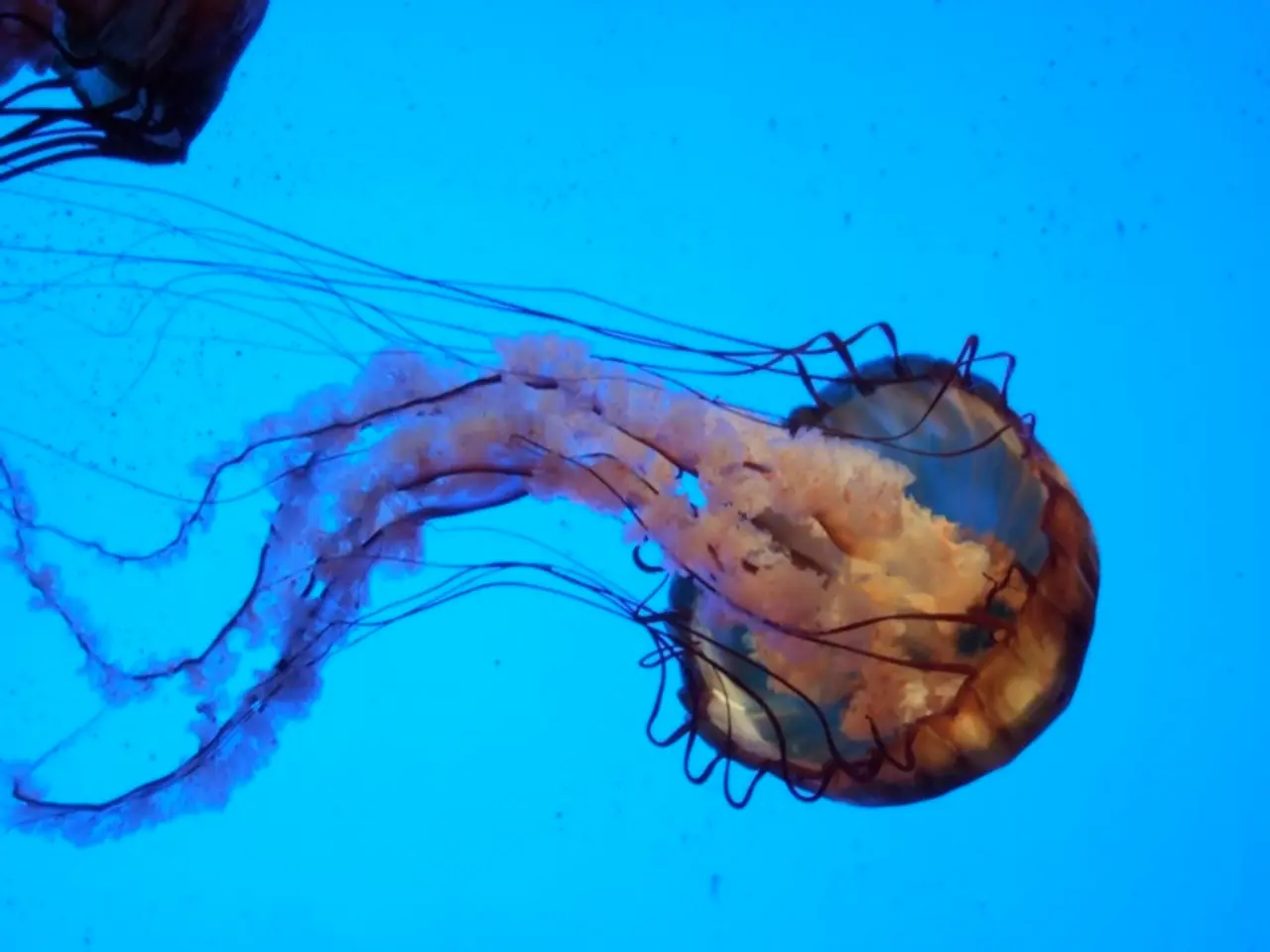Coastal Invasion by Jellyfish in the North Sea
In recent times, a participatory website has indicated an increase in the presence of jellyfish on beaches in the north of France, prompting a call for beachgoers to be vigilant. While official data is still lacking, the sightings suggest that jellyfish could pose a significant issue in certain areas.
Recommended Actions for Jellyfish Stings
If you encounter a jellyfish and unfortunately get stung, follow these steps to minimize discomfort and potential harm:
- Rinse the sting area with saltwater or a diluted vinegar solution. Avoid using freshwater, as it can activate more nematocysts and cause additional stinging.
- Carefully remove any remaining tentacles using tweezers or a clean card like a credit card. Wear gloves if removing with your fingers.
- Soak the affected area in warm or hot water for about 15 to 30 minutes to help alleviate pain.
- Use an ice pack wrapped in a towel to reduce swelling and discomfort.
- If symptoms worsen, such as increased pain, spreading rashes, or allergic reactions, seek medical help immediately.
Increase in Jellyfish Presence on French Coasts
While there is no specific information about an increase in jellyfish presence on French coasts this year, a recent incident involving a jellyfish swarm causing a shutdown of a French nuclear power plant serves as a reminder of their potential impact. Elvire Antajan, a jellyfish specialist, states that the current number of jellyfish is normal for this time of the year. However, Vincent Thery, chief lifeguard of Malo-les-Bains, explains a method to treat jellyfish stings using wet sand, a credit card, clear water, and disinfectant.
Scientists lament the lack of studies on jellyfish and their connection to climate change. They are cautious about the increase, as they lack sufficient official data. According to Antajan, the presence of jellyfish offshore and a current brought some of them closer to the shore. For specific information on local conditions, it would be best to consult local marine reports or beach advisories.
Stay safe and enjoy your time at the beach!
- The increase in the presence of jellyfish on French coasts, though not confirmed for this year, has sparked concerns among scientists, who are urging more research on their potential connection to climate change.
- In light of the recent findings about jellyfish swarms, it's essential for both local researchers and beachgoers to be knowledgeable about treating jellyfish stings, such as using saltwater, tweezers, warm water, and hospitalization when necessary.








